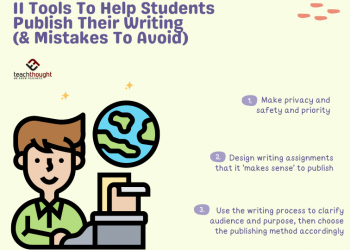I sat at a table with superintendents from around the country this summer, talking about the losses threatening districts coming out of the pandemic. Learning loss was certainly a huge concern, but not the only loss that worried them.
Not one of these districts is growing. Some of them have lost more than 10 percent of their students since the pandemic started. Enrollment losses will be an enormous, ongoing challenge for many school systems across the U.S. post-pandemic.
“What we’re trying to do is just stop the bleeding,” said Jerry Almendarez, the superintendent of the Santa Ana Unified School District, south of Los Angeles.
It’s important to understand why enrollment loss is such a critical issue for these leaders. With every student who walks out the door, school funding leaves with them. The fixed costs of running their schools do not decrease proportionately.
This makes it difficult for these leaders to provide more opportunities, rigor and support for students at the precise time students need them the most. If we can’t reverse enrollment losses, the cost of running a school will become untenable. Schools will be forced to close or cut corners on quality; inequality will soar as parents with means find and fund alternatives to public schools — paying private school tuition or home schooling — while families who already struggle to get access to a quality school will be stuck in a flailing public education system.
If access and quality are compromised, it will risk our democratic foundations.
There are many reasons to see this as a real danger. Public school enrollment fell nearly 3 percent after the pandemic hit. Some children switched to private schools. Others started home schooling, which ballooned by 35 percent from before the pandemic in the 18 states that shared recent homeschooling data.
Santa Ana’s enrollment losses accelerated during the pandemic, according to the California Department of Education, from about 5 percent overall from 2017 to 2019, to 12 percent from 2019 to 2021. Some classes now have as few as a dozen students in them. Almendarez is keeping the district afloat through short-term federal Covid relief funds but told me: “We don’t know how long we’ll be able to do that.”
Jeff Finch, who oversees the Grove City Area School District in Pennsylvania, is facing similar issues. He says that the threat to funding is exacerbated by a lack of time to address it. “When you’re always in a triage mode, then you’re only fixing wounds,” Finch said. “And then you relate that to technology or future job needs, that means you’re always working in a reactive sense, never in a proactive sense.”
“We have had to make some cuts due to decreased enrollment. It stretches your budgets so you can’t [fund] initiatives and other things that you need to do — professional development, things like that … it limits you.”
Simpson County, Mississippi, Superintendent Tori Holloway
In Simpson County, Mississippi, Superintendent Tori Holloway must also do more with less. “We have had to make some cuts due to decreased enrollment,” Holloway said. “It stretches your budgets so you can’t [fund] initiatives and other things that you need to do — professional development, things like that … it limits you.”
If these three superintendents are to keep their current students and entice others to return before they reach a critical tipping point when the decreased enrollment makes it financially impossible to provide an adequate education to all, they must rebuild connections between schools, students and the community. All three leaders are working hard to do just that.
“We found out the reason some families left is because this district did not offer some of the things that they wanted their kids to have access to,” Holloway said.
So, Simpson County is adding Advanced Placement classes to address that feedback, bringing students together to help decide which ones to introduce. The district has also spoken with local community and business leaders about creating closer ties between education and jobs and is opening a new high school centered around career academies.
Finch is working to make Grove City’s schools more relevant to their northwest Pennsylvania community, so they’re not seen as a singular entity but as part of the broader economy.
“If we really want to connect with what kids in school today will need as skills tomorrow, we have to have intentional partnerships with the employers of tomorrow,” Finch told me. “We have to make them a part of the school system.” To foster that change, the Grove City district is partnering with community leaders and businesses to create a shared vision.
Related: Where have all the kindergartners gone?
Almendarez is looking for ways to save money so that Santa Ana can provide students with more learning options. The district has combined some elementary and middle schools into K-8s, cutting down on fixed costs, while also providing more opportunities for students to choose their own learning paths. The district is exploring flexible scheduling, with evening and online sessions to accommodate working students and families.
These leaders, the school systems they lead and even how we educate kids are all at a crossroads.
Many families are so fed up that they’re pushing for alternatives to public schools, which would effectively strangle the public education system as we know it.
But we do not have to kill our public schools in order to save them. We can revitalize them. The efforts of these district leaders and those in other systems around the world show us that it is possible.
I’ve seen the proof in countries that currently out-perform our own by using innovative policies: Estonia’s competency-based curriculum, Switzerland’s continual focus on rigorous career and technical education, Hong Kong’s nearly universal early childhood education and Singapore’s highly effective educator development programs. These systems are better designed to meet the challenges of a rapidly changing world.
U.S. districts can raise their value and appeal by listening to the students, parents and businesses that their schools serve. They can give students increased learning options while at the same time meeting real world budget conditions. And they can work across and beyond their systems to build connections that will allow students to thrive now and in the future.
A demographer predicted that Santa Ana’s population will continue to shrink in the coming years. Almendarez told me his goal is to prove them wrong. He and his colleagues aren’t content to simply stop the enrollment losses: They are building stronger school systems that will attract students to their schools and families and businesses to their communities.
Jason Dougal is the president and COO of the National Center on Education and the Economy, a nonprofit international education research, policy and professional learning organization.
This story about public school enrollment losses was produced by The Hechinger Report, a nonprofit, independent news organization focused on inequality and innovation in education. Sign up for Hechinger’s newsletter.
Related articles
The Hechinger Report provides in-depth, fact-based, unbiased reporting on education that is free to all readers. But that doesn’t mean it’s free to produce. Our work keeps educators and the public informed about pressing issues at schools and on campuses throughout the country. We tell the whole story, even when the details are inconvenient. Help us keep doing that.
Source by hechingerreport.org










